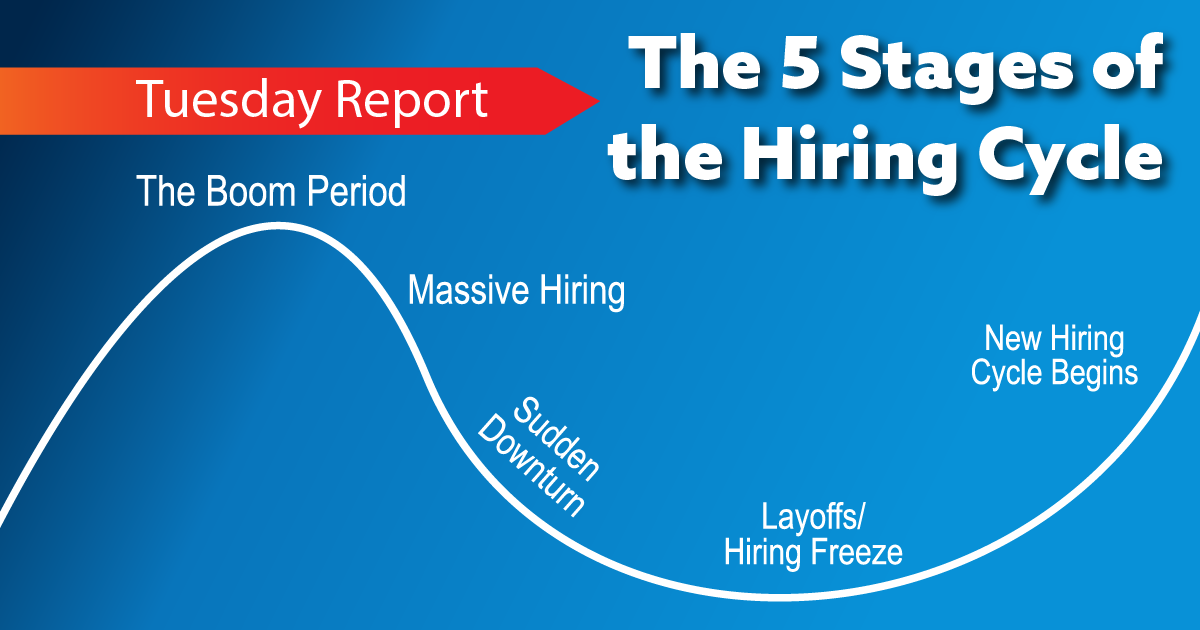I’m always intrigued by the sudden cycles of hiring and layoffs. Last year companies couldn’t find enough people to hire. If you walked and breathed (well this is a bit of exaggeration), you were on the payroll. Now a CEO steps out of the office, sniffs the air, and declares they smell a recession coming on and we’re looking at a 10% layoff. Last year someone bought one of those new, overpriced vehicles when they got the dream job when times were roaring. This year after the layoffs, the whole family may be out there pushing that same vehicle, a big job in this Texas heat. Jobs are suddenly getting scarcer, and job offers are being rescinded.
I think it would be entertaining to see this weird cycle applied to sports. In American basketball when attendance dipped 20%, wouldn’t it be interesting to see the standard 5 players playing on the court was reduced to 3? Management would announce gravely that it’s going to be a hardship on everybody and put the franchise at a disadvantage. We might not get to the playoffs this year and our team could be seen as a joke, but those are the reduction numbers given us by the finance department.
Like a basketball team down to 3 players, will companies be competitive after the new cycle of layoffs? Will those employees who remain be demoralized and undermotivated? Why did the organization need those extra 10% last year, but now it can do without them? Will the organization create a downward spiral by the layoffs it won’t survive?
Here’s my take on what’s going on, and I’d love to hear yours:
- I have concluded that organizations make the most irrational decisions when it comes to hiring and layoffs—and I’ve watched the process through many cycles.
- During roaring economies, organizations find themselves overwhelmed, unable to cope with production, bottlenecks, and product launches. Unable to really analyze and fix the problems, they hire more people and the problems don’t get solved but they get through and the increased revenue masks the unresolved problem. There is often an unseen number of employees who work hard on projects that are unrelated to organizational goals.
- When the economy sags, finance brings out the revenue forecast figures vs. the cost of personnel and decides the number of employees that have to go. The problem with layoffs is that they are somewhat like a surgery gone awry. You all too often cut out what you think you need to cut out along with some things it turns out you needed.
- So an employee is needed to pull a project over the line where millions of dollars have been invested, but you can’t hire that game-changer employee because there’s a hiring freeze—“if we allow you that employee, we’ll have to let everyone hire.” Millions of dollars and a key objective go down the drain because the team lacks the winning player.
- The whole process of hiring in good times and laying off when things are bad makes perfect sense as an accounting practice, but it is the very worst business strategy that organizations employ in terms of competing successfully and achieving their goals.
- In the best of times, organizations should be working on reducing head count. Instead of the cycle of hiring and laying off as the pendulum swings, both of which are enormously expensive, organizations need to do the counterintuitive. Reduce the number of employees in up cycles if those employees’ roles do not have a clear objective that relates to the success of the organization or are not achieving the key results that move the organization forward. Organizations must always focus on reducing headcount in areas that don’t produce results, not just in downturn cycles.
- Organizations must measure employee effectiveness. So much measurement of effectiveness is subjective, the impressions of the direct supervisors in times of annual reviews. A 360 multi-rater evaluation is key to seeing employees through the eyes and experiences of those who know them best—those who work with them every day.
- Blanket hiring freezes are insane when they force organizations to field a team that cannot win. Star players should be hired no matter what the economy is. They will allow organizations to beat a bad economy through their success. There must be a process to hire key people in the worst of times.
- Organizations can dramatically increase productivity in order to reduce costs, much more than is commonly recognized. The cost of personnel—hiring, salaries and benefits, severance packages and related costs range from 30 percent in the retail industry to over 90 percent in start-ups. Personnel costs over a period of a year can be reduced by 20% and retain organizational effectiveness and productivity. Companies hemorrhage cash because they can’t manage their workforce.
The enormous cost of personnel is often the reason that profits are razor-thin, and when revenues decline, layoffs are necessary no matter how badly they damage the organization and employees. This becomes a death spiral. Reducing the cost of the workforce by 10 to 20 percent before there is a need for layoffs by focusing on alignment, results-oriented metrics, and performance will have the most dramatic effect on the bottom line of revenue. And this creates a virtuous cycle upward by creating a high-performing team that draws other top performers.
The most amazing thing about organizations and the cycles of hiring and layoff is the often non-existent strategy of supporting employee success at every point in the cycle. The organization will have a department to support technology, but there is most often not a department of employee success. Human resource departments are critical to organizations, but employee success through alignment, coaching and mentoring, as well as measuring employee success is just one aspect of their huge job. It would be similar to making the coaching of a professional sports team a side gig for the player relations department.
There will undoubtedly always be the cycle of hiring and layoffs, but the central task is how do we reduce employee headcount in areas where functions can be combined or eliminated and align the entire organization behind its goals. The savings can be huge. How do we increase productivity and reduce turnover? How do we avoid playing basketball with 3 employees on the team when 5 are needed to win the championship? Let us be a part of creating productivity and reducing costs.






